Japanify Ingredients: Know Your Seaweed

The eskimos have many words for snow, just like the Japanese have many words for seaweed.
For those of us on the other side of the pacific, the lack of words for seaweed is problematic. It is very confusing when reading the translated English ingredients for nori, iwanori, wakame and kombu since they all say "seaweed."
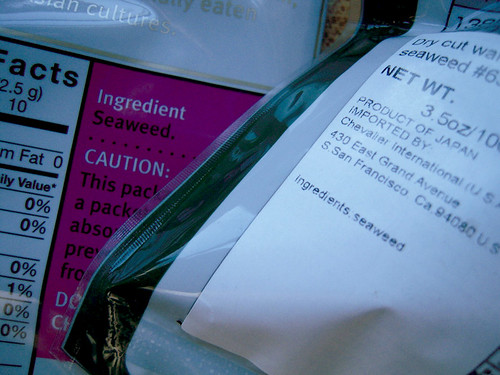
It's kind of like listing the ingredients for a bag of frozen shrimp and pack of smoked salmon as "seafood." Totally different foods with totally different applications.
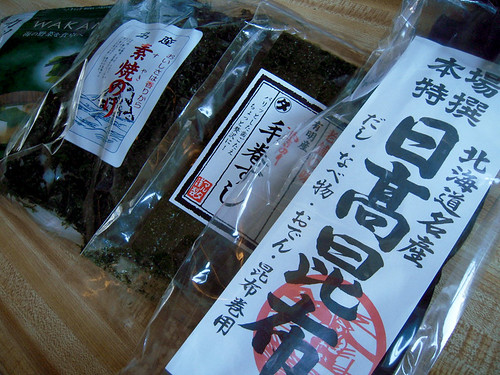
There have been a few times when people have asked me what all these different types of "seaweed" are used for - so I will attempt to explain here. I am going to describe the different types from soft to hard.
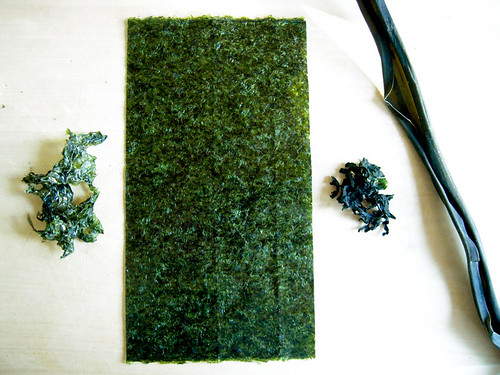
Iwanori (Porphyra Yezoensis)
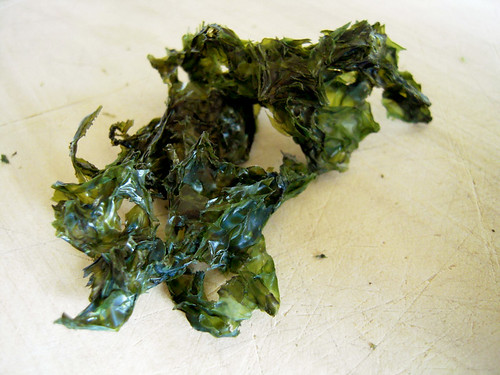
Iwanori literally means "rock seaweed" because it is found in the crevices of rocks. Like regular nori (see below) it is dried and eaten. It's very soft and delicate - almost like dried out lace. It's excellent to sprinkle on pasta, soba and tofu.
Iwanori is much more aromatic than nori. I would almost say that it's the veal of nori. It's greener and falls apart in your mouth quicker.
Kids who grew up on Japanese condiments laden with MSG are usually fond of iwanori tsukudani from the brand Gohandesuyo.
Nori (Porphyra)
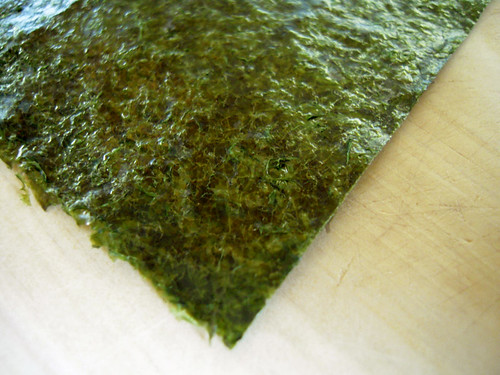
This is probably the type of seaweed that people see the most in the U.S. We are crazy about rolls in the U.S. so we must be crazy about nori too. Nori, sometimes referred to as laver, is made out of red alga. Nori is produced by a drying process and comes in neat square or rectangle sheets.
Although most commonly seen as the "black wrapping" of a roll, nori is also great right out of the bag. The crispy texture is irressistable. Unlike some other types of "seaweed" you do not soak nori in water. If you do so - it will fall apart.
Nori with Megumi Natto, Shiso, Ume and Rice

Wakame (Undaria pinnatifida)

Wakame is made from a sea vegetable called Undaria pinnatifida. That's a mouthful.
Wakame is most commonly seen in miso soup. Before that stage, however, it's usually dry (at least in the states) and rehydrated. Wakame must be hydrated and consumed, unless you like scratch marks on your esophagus.
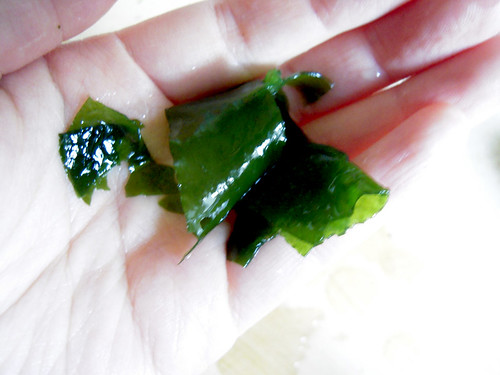
Dry wakame is super convenient because it never goes bad. When I don't have salad greens on hand, I can always rely on these shriveled dudes for a fantastic wa-fu salad.
If you get a mouthful of hydrated Undaria pinnatifida in your mouth, you will find it to be slippery and potentially slimy. The texture is the pull here - since it doesn't taste very strong. Thicker parts of the wakame can be described as crunchy or "kori kori" in Japanese.
Wakame in Sunomono
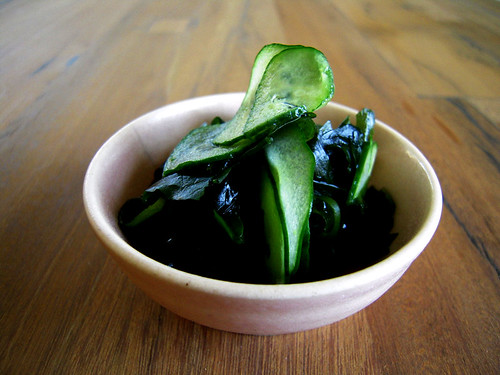
Kombu (Saccharina japonica)
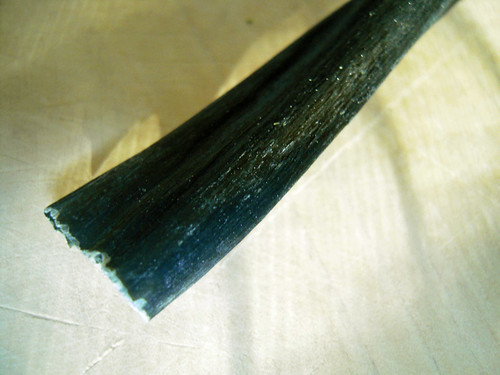
The liquid of the gods in a Japanese kitchen is dashi. And good dashi begins with kombu. Kombu is the toughest of all four seaweeds introduced today and like wakame, it is always rehydrated.
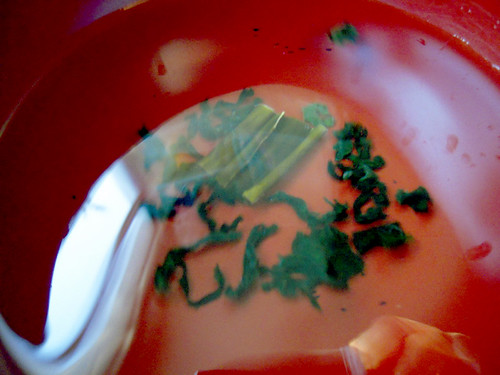
It is often not consumed directly (even after hydration), but used for stock-making. Some exceptions to eating the actual kombu are for oden and battera sushi.
I use kombu every week to make my dashi. It must be soaked in water for a minimum of 20 minutes, uncovered, before it is exposed to a heat source. Kombu provides the base for many things umami-related in Japanese cuisine.
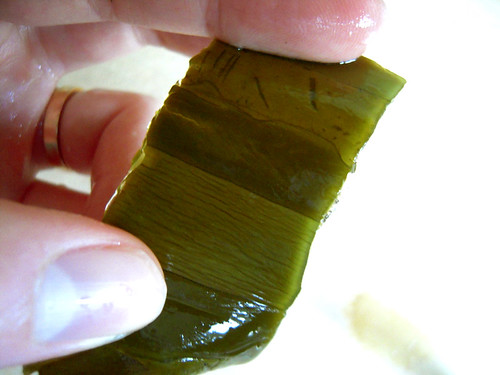
Here's a little fact from wikipedia about kombu and the Okinawa prefecture which enjoys the title of having the world's longest life expectancy:
Traditional Okinawan cuisine relies heavily on kombu as a part of the diet; this practice began in the Edo period. Okinawa uses more kombu per household than any other prefecture.
Kombu in Dashi
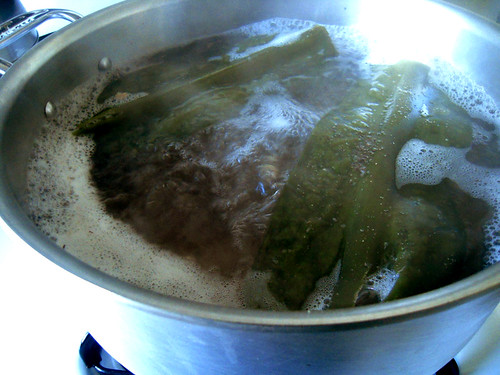
There are still so many types of seaweed that are in the Japanese diet, but I would say that nori, wakame and kombu are the three that I consume on a daily basis.
Having a bunch of words for snow may be useless in umamiland, but it's certainly not useless to have a bunch of words for seaweed.
